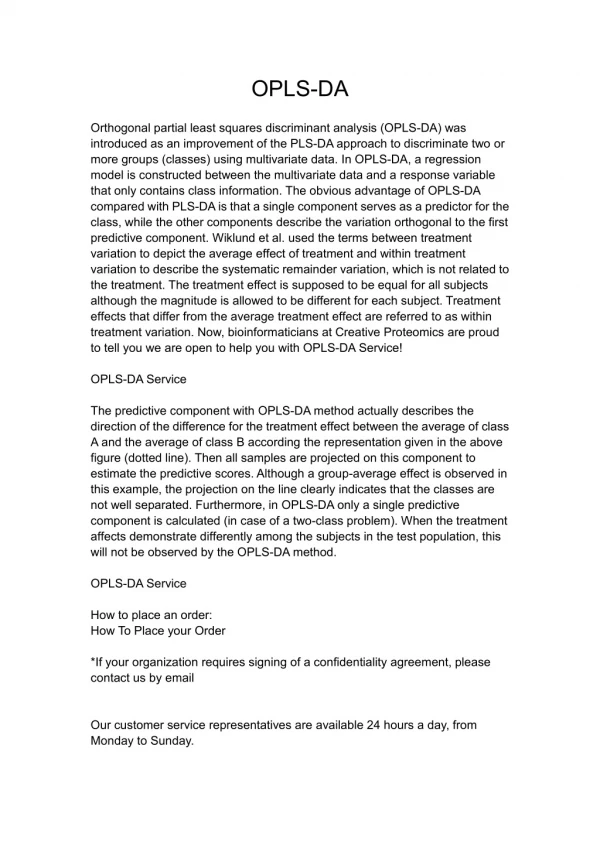OPLS-DA
Orthogonal partial least squares discriminant analysis (OPLS-DA) was introduced as an improvement of the PLS-DA approach to discriminate two or more groups (classes) using multivariate data. In OPLS-DA, a regression model is constructed between the multivariate data and a response variable that only contains class information. The obvious advantage of OPLS-DA compared with PLS-DA is that a single component serves as a predictor for the class, while the other components describe the variation orthogonal to the first predictive component. Wiklund et al. used the terms between treatment variation to depict the average effect of treatment and within treatment variation to describe the systematic remainder variation, which is not related to the treatment. The treatment effect is supposed to be equal for all subjects although the magnitude is allowed to be different for each subject. Treatment effects that differ from the average treatment effect are referred to as within treatment variation. Now, bioinformaticians at Creative Proteomics are proud to tell you we are open to help you with OPLS-DA Service!
★
★
★
★
★
48 views • 1 slides
